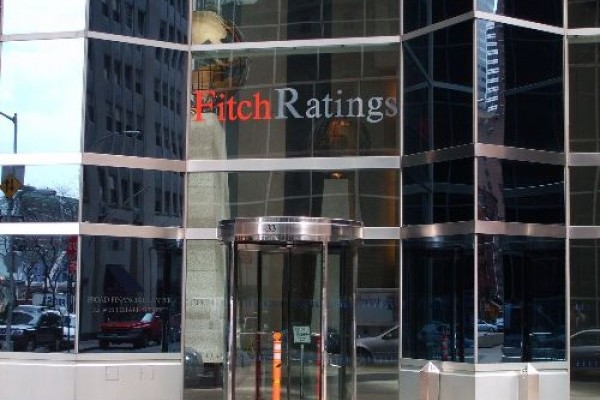Fitch: Strong growth of non-oil economy to support Azerbaijani sector liquidity

Asset quality and liquidity have been stable in Azerbaijan, but the performance of both the broader economy and the banking sector remains highly dependent on the oil price, Fitch Ratings said on Thursday.
The Stable Outlooks on most banks reflect Fitch's base case expectation of continued strong near-term growth of the non-oil economy, which should continue to support sector asset quality and liquidity, the statement said.
Fitch Ratings says that capital issues have become key for many Azerbaijan's banks as a result of rapid asset growth, weak internal capital generation and tougher regulatory requirements.
Fitch views current capitalisation as moderate (the aggregate sector total capital ratio stood at 16.7% at end-2012) given the still high level of loan impairment and modest reserve coverage. The agency estimates that full provisioning of non-performing loans (NPLs) would result in the sector capital ratio falling to the minimum 12% level. In addition, capital (and asset quality problems) are unevenly distributed across the system, with three large banks (together comprising 44% of sector assets) already operating with ratios very close to or below 12% at end-2012, the statement said.
Smaller banks appear to be poorly prepared for the increase from January 2014 of the minimum permitted absolute amount of regulatory capital to 50 million manats.
At the end of 2012, only 12 banks in the sector were already compliant with the new requirement, while a further seven had capital of more than 35 million manats, meaning only moderate capital raising should be necessary to achieve compliance by end-2013. The remaining 24 banks (in aggregate short of more than 700m manats to reach the new requirement) will need to seek more substantial capital contributions, pursue merger opportunities, or transform themselves into non-banking credit institutions, the statement said.
Sector-wide profitability has been weak, with an estimated return on average capital of just 8% in 2012 due to low margins, unresolved asset quality problems and limited operational scale at most privately-owned banks. Fitch expects that these factors will continue to weigh on sector profitability in 2013, meaning that internal capital generation alone is likely to be significantly slower than still rapid loan growth (which Fitch forecasts to remain at 20%-25% in 2013).
Asset quality has stabilised, supported by the buoyant macroeconomic environment, but a survey of Fitch-rated banks still indicated (weighted) average NPLs of 13% at end-2012 and the same amount of restructured loans, the statement said.
Fitch expects the economy to remain supportive in 2013, with non-oil GDP growth projected at 10% driven by fiscal spending, but long corporate loan tenors (frequently coupled with grace periods) mean that the quality of much lending is largely untested. Rapid consumer lending growth (by more than 50% in 2012) is also a source of risk, although overall household leverage remains moderate to date, and in a favourable economic environment, personal income should continue to rise.
Sector funding and liquidity is supported by expansionary fiscal policy and FX purchases by the Central Bank aimed at maintaining the exchange rate. Retail deposit growth has been robust (24% in 2012), although consumer confidence in the banking sector is still fragile, reflected by the still large volume of monetary operations outside the system. Underscoring limited sector intermediation, the state remains an important source of funding (25% of sector liabilities at end-2012), mostly provided for targeted lending. Foreign borrowings were a significant 20% of liabilities, but this was equal to a moderate 8% of sovereign FX reserves, and more than half of the amount represented borrowings by majority state-owned International Bank of Azerbaijan (IBA, 'BB'/Stable).
The Viability Ratings of Azerbaijani banks are concentrated in the 'b' category (or below) and remain constrained by weaknesses both in the broader operating environment (including the potential cyclicality of the economy, weak corporate sector transparency and low World Bank governance indicators) and their own franchises, governance and performance. Most banks' ratings do not benefit from potential external support given considerable uncertainty about the authorities' willingness to provide capital assistance in case of need, in particular following the delayed and limited recapitalisation of IBA.
Today, Fitch rates 13 organizations in Azerbaijan, including nine commercial banks. After the process of banks' capitalization is over in 2014, the agency is ready to expand the list of banks and give a rating to middle-sized banks.
Around 70 percent of the assets of the country's banking sector fall to the banks cooperating with the agency.
The official exchange rate is 0,7846 AZN/USD on April 5.
Here we are to serve you with news right now. It does not cost much, but worth your attention.
Choose to support open, independent, quality journalism and subscribe on a monthly basis.
By subscribing to our online newspaper, you can have full digital access to all news, analysis, and much more.
You can also follow AzerNEWS on Twitter @AzerNewsAz or Facebook @AzerNewsNewspaper
Thank you!
